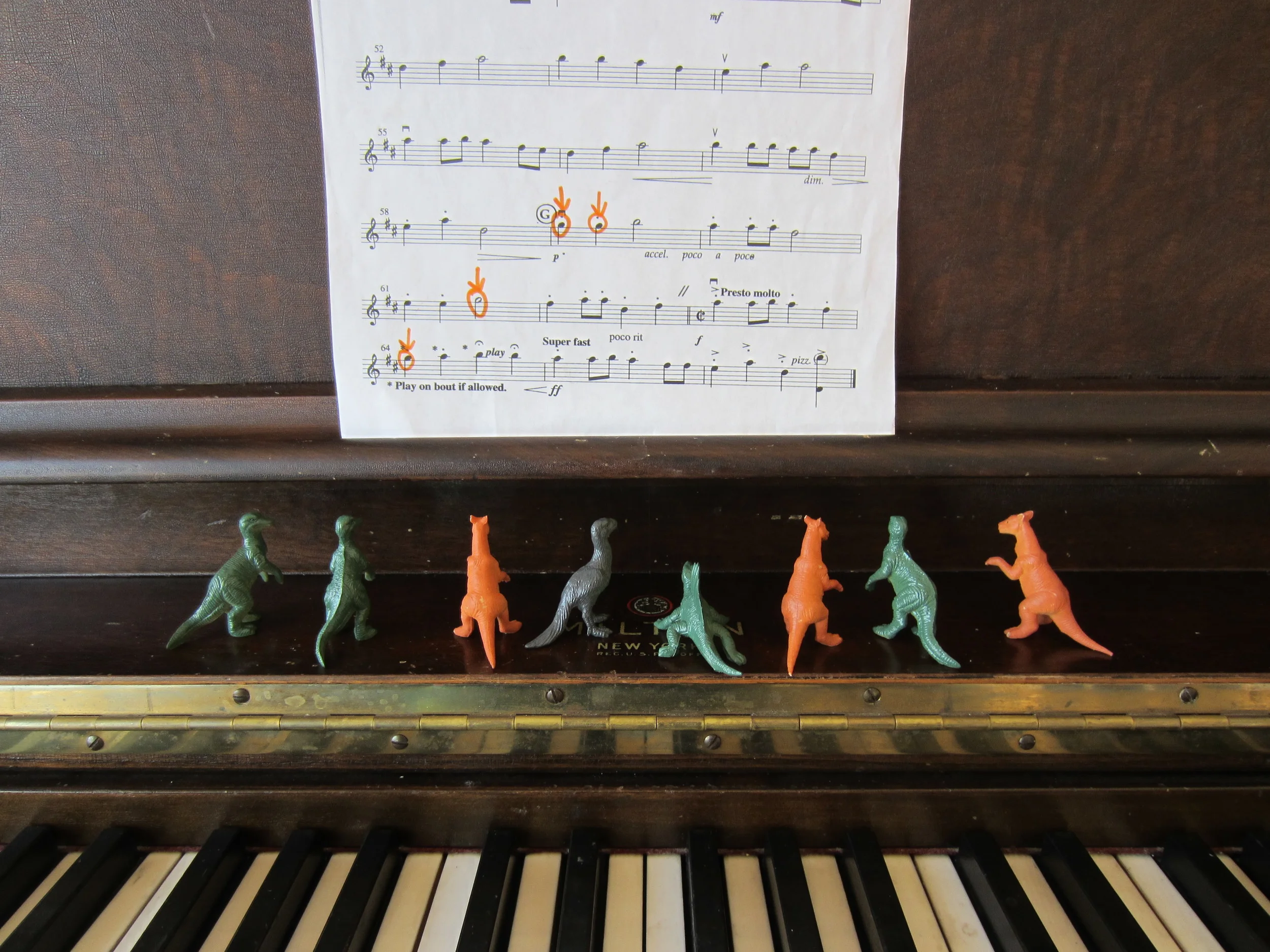Practice Tips That Rock
Getting kids to practice can sometimes feel like a chore for both the parent and the student. Use these practice tips to turn practicing into their favorite time instead of battle-it-out-time. These ideas work great for any instrument, and can be implemented by both the parent and/or the teacher.
Practicing should be fun right?! I think so, and so do my own kids. If you liked our original practice tips article for motivating students using fun strategies, you'll love these. I firmly believe that weekly lessons and daily 'learning time' can be fun AND productive. In fact, the two usually go hand in hand. When your student is having fun they will be more productive and engaged. Here are a couple of strategies using common household items and toys. If you don't have some of the same toys pictured, improvise. This is more just to get the ball rolling and a springboard for your own ideas. If you have any great practicing (or as I like to call it learning) time tips please share with our readers.
Counting Repetitions - Anytime your child needs to practice one measure, one line, one arpegio, one scale, etc. use a manipulative to count it out. This helps your child keep track and boosts their self esteem when they can visually see how many times they have practiced something. Plus it adds an element of distraction and fun to keep them from feeling bored. Here are some of our favorite manipulatives; army guys, counting bears, mini animal statues, pennies, figurines
Musical Builders - If your kid loves building bricks, they'll love this! Give them a pile of locking building bricks and let them add one piece every time they practice a song. You can make it a week long running game and see how tall or what cool creation they can build over the course of a week. Have them bring their building brick creation to their lesson, shower them with praise and take a picture of their building to add to a 'building musicians one brick at a time' bulletin board.
Are you feeling lucky? Kids love a game of chance. All this strategy takes is dice or a deck of face cards stacked in a pile face down. There are a couple of ways you can use dice and cards for this practice tip.
The first is to make a list of their songs with a coordinating number next to it. When they draw a card or roll the dice they look on the chart to see which song matches that number and then they practice it. You can use the royal cards as free choice or choose two songs to mix it up. This is great for review time when they have a lot of songs to practice.
Second strategy for using dice and cards is used with ONE assigned song, scale, or section of a song. They roll the dice or draw a card and practice that assigned song however many times through for the number showing on the dice or card. Kids LOVe it when they draw an ace or roll a one!
For the third practice tip, you will need to write up a list of different ways to practice a specific song. I do this with my own daughter all the time with a die and it works really well. She loves doing it and will spend a lot of extra time playing this "game". Whatever number she rolls, is the learning technique she uses to play through her song. Here is an example of a list you might use:
- Play with the metronome.
- Play with just the bow, no fingers.
- Play with just the fingers, no bow.
- Play using ghost fingers (this is where you lightly press the notes, sounds awful but teaches them to relax)
- Play it with eyes closed.
- Play it in slow motion.
Build Mr. Potato Head - Pretty simple idea, every time they play through a piece they get to choose a body part to add to Mr. Potato Head, and where to put it. Kids like to be silly and creative and this encourages that, but also gets them to practice! Again, it's all about positive reinforcement and adding an extra element of hands-on fun.
Musical Hangman - This practice tip can kill two birds with one stone: getting your student to practice and reinforcing music theory. Using a white board or just a piece of paper, choose a word (hint: works well with musical terminology you are trying to teach your student anyway). Every time they play a piece or a section they get to choose a letter. Instead of drawing hangman try these ideas for even more musical enrichment: have the musical staff drawn out and let your student draw one note to whatever scale you've chosen each time they miss a letter. When you've drawn out the full one octave scale, game over. Don't forget to use it as a learning moment to show where the half steps are. For beginner students, draw a the shape of a violin, have them add the specific parts: f holes, strings, bridge, chin rest, pegs, and fingerboard.
Bubble Timer - These little bubble timers are super fun for the kids, but beware they can sometimes be too distracting. One way I use them is, if I need to step out of the room for a minute, I'll pull it out and have them practice a technique or song until it runs out.
Use these practice tips daily, but mix them up often to keep your student engaged and interested. When they associate having fun with practicing their instrument, it serves as positive reinforcement. Although these are extrinsic motivators, when that love and joy is happening daily, the association is made and it will become intrinsic. Your student will keep coming back for more!


















